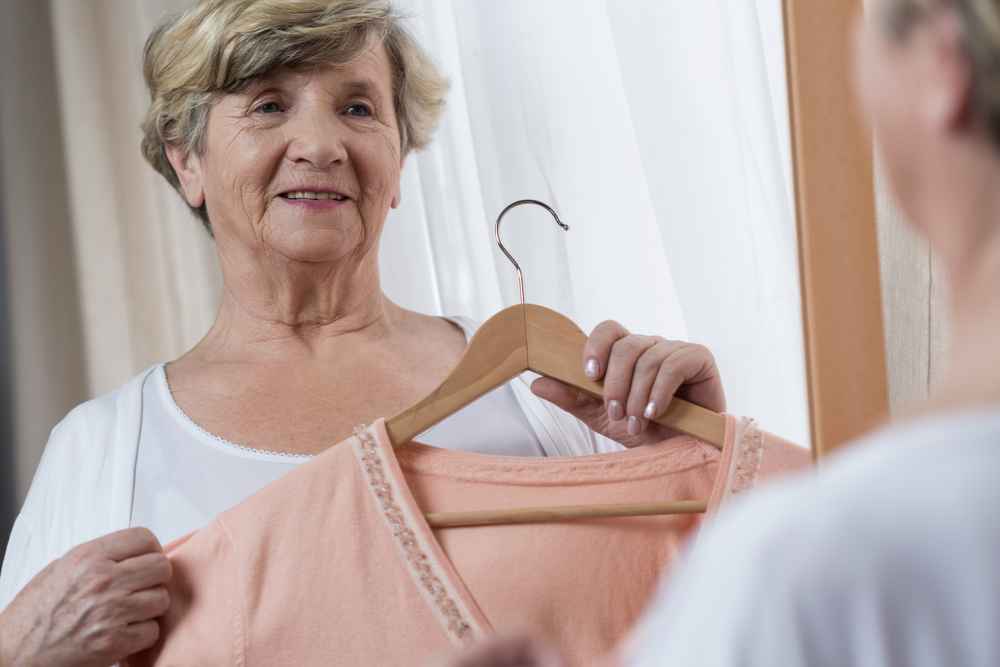Many older adults hope to age in place due to both financial and sentimental reasons. Unfortunately, making modifications with the elderly in mind can be expensive. Home renovations such as putting in a wheelchair ramp or installing a stairlift can cost hundreds or even thousands of dollars. However, not everything that improves the safety of your elderly parents’ home needs to cost a lot of money. Here are 12 ways to make your parents’ home safe that are low-cost or free, from buying adaptive clothing for women to testing their smoke alarms:
Get them shoes to wear inside.
Wearing shoes with a non-slip sole at all times — even inside — is one of the best things that your elderly loved ones can do to prevent falls. If they don’t already make a habit of this, buy them some comfortable house slippers that they will want to wear indoors. Look for ones that come with adjustable Velcro tabs so they can adjust the fit based on how swollen their feet are that day.
Remove tripping hazards.
Go through their home and remove anything that could potentially cause a fall: loose rugs, stray electrical cords, pet food bowls, whatever clutter you find. Relocate these items to a safer place where they cannot migrate underfoot.
Rearrange the furniture.
Larger obstacles, such as furniture, pose less of a tripping hazard but can still contribute to falls. Channel your inner home decorator and rearrange their furniture so that it doesn’t block doorways, walkways, outlets and other essentials. Make sure that there is plenty of seating in every room since many older adults find it fatiguing to stand for long periods of time.

Try non-slip adhesive strips.
Sometimes, older adults have placed rugs on their hardwood or tiled floors in order to make them less slick. However, the rugs can still pose a hazard if not attached to the floor. As a replacement, we recommend looking into non-slip adhesive strips that stick directly to the floor or stairs. This will give their shoes more traction without posing the same risk that rugs do.
Install grab bars.
Putting grab bars in the bathroom is one of the most simple and cost effective things that you can do. If the bathroom doesn’t have a layout that is conducive to grab bars, then look into a toilet chair rail, which is a freestanding product that can be installed regardless of where the walls are.
Get them a shower chair.
A shower chair is another addition that you should definitely make to their bathroom. Shower chairs greatly reduce the risk of falls and make it possible for them to keep bathing even if they get fatigued by standing for long periods of time. While you’re at it, switch their showerhead to a handheld model so they can more easily rinse themselves off while sitting.

Give them adaptive clothing.
Regular clothes are not designed for older adults with mobility limitations, which can make getting dressed difficult or even impossible. Invest in women’s and men’s adaptive clothing, such as bibs for adults and elastic waist pants, so they can continue to dress themselves as long as possible.
Plug in night lights.
Older adults frequently get up to use the restroom in the middle of the night and end up tripping over unseen objects. To prevent this from happening, install motion-activated night lights in hallways, along stairs, in the kitchen, in the bathroom and in other high-traffic areas. They will automatically light up when your loved one walks by and then dim when they return to bed.
Reorganize their cupboards.
Standing on a rickety step stool to reach the top step is not a wise idea for older adults! Nor is bending down low, which shifts their center of balance and can make them fall over.
Help them reorganize their cupboards, closets and pantries to locate the items that they need most often at eye level. Ideally, cabinets close to the ceiling or very low to the ground should be left empty if at all possible so they aren’t tempted to reach too far.

Clear the entryways.
Most people pay attention to fall prevention inside the house, but forget about the outside. Do a perimeter check to make sure that all doorways and walkways are clear and then test the outside lights at night and replace any bulbs that don’t work. You might want to consider installing motion-activated light bulbs outside too so your relatives don’t have to remember to turn them on and off every day.
Test all safety devices.
It’s easy to forget to test common safety devices like smoke detectors and fire extinguishers precisely because they are designed to be so low maintenance. At least once a month, try to test their smoke alarms and replace the batteries if they are out of juice. Inspect their fire extinguishers and replace any that have expired, even if they haven’t been used.
Clean their house regularly.
One of the biggest safety hazards for older people is good old-fashioned clutter, which often ends up on the floor. Helping them to clean their house regularly — or hiring a maid service to do it for them — is one of the simplest and most effective things that you can do to help your relatives stay safe as they age in place.
Got more free or low-cost tips for keeping elderly loved ones safe at home? Drop them in the comments below so that we can all learn from each and help keep our relatives safe as they age in place at home!


